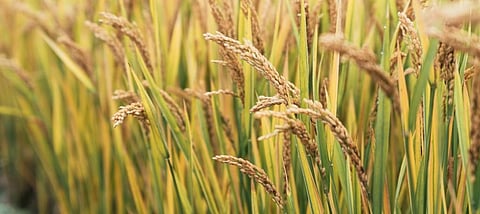Remote sensing can resolve food crisis
Consumption of essential food items such as cereals, sugar crops, fruits and vegetables is rising globally. In 2016, the global cereal production stood at 2.84 billion metric tonnes, of which 0.29 billion (10 per cent of the total) metric tonnes was produced in India.
Since 1960, there has been an increasing trend of land under cereal production at the global level and in 2016 it was estimated to be around 0.72 billion hectares of global land. For India, it was 0.09 billion hectares, accounting for 12.5 per cent of the total land.
Agriculture accounts for one-third of global gross domestic product (GDP) according to 2014 World Bank statistics. It was also 15.45 per cent of GDP in India in 2017.
It is also interesting to note that, 17.7 per cent of the world population is in India (1.34 billion) people and is projected to rise, according to the 2017 revision of the World Population Prospects by the United Nations.
This increasing population has an adverse effect on the state of undernourished people, as it has ascended to 11.5 per cent from 9.4 per cent in southern Asia (countries including India, Pakistan and Bangladesh) from 2015 to 2016, according to the Food and Agriculture Organization (FAO).
These statistics have undoubtedly raised worldwide attention to curb this unbalanced demand and supply problem arising in the food sector. To meet the present food crisis, transition towards sustainable crop production is paramount.
India is an agrarian country and is the second-largest producer of cereal crops like rice and wheat, fibre crops like cotton, sugar crops like sugarcane and fruits, vegetables and tea at the global level. It also devotes the largest area for rice, wheat and cotton to grow.
Out of several river basins, the Indo-Gangetic basin is one of the largest in the world with numerous agricultural areas. This basin is characterised by dynamic crop and soil types, meteorological conditions and land use and land cover. This diversity has allowed farmers to grow different crops. The cropping seasons in India is divided into two seasons, namely kharif and rabi.
The crucial meteorological factors are precipitation and temperature influencing the soil moisture profile which is essential for crop growth. These cropping seasons are defined, depending on the meteorological conditions prevailing over the year.
Remote sensing
Remote sensing has provided data at desired spatial and temporal resolution to understand the behaviour of soil moisture. Amount of sufficient water required for a crop (from sowing to harvesting) at root depths, termed as crop water requirement is derived using the surface soil moisture data.
In the Indo-Gangetic basin, sugarcane, rice and wheat crops experience highest soil-moisture deficit condition. While considering all crops, a direct relationship between CWR and meteorological seasons is seen with the highest deficit state in summer season and no deficit condition in monsoon season.
It is also important to note that in India, 80 per cent of crops are rainfed and 20 per cent are dependent on canal or groundwater irrigation.
Sustainable crop production
Knowledge of yield, production and area index for these crops in the Indo-Gangetic basin has further provided the evidence that soil moisture deficit state has an interim effect on the total crop production annually.
There is also an interrelationship between area and production index, as it is observed that even though area remains the same or is reduced, the production has increased, but the question is, whether this rise in crop production is meeting the present demands.
The policies which are already in use should be revised by considering farmers’ daily and seasonal needs and objectives. The present groundwater pumping system used in irrigation is either not used because of high fuel cost or used in an irregular fashion leading to highly inefficient irrigation structure. Also a lack of availability of canal network everywhere deteriorates the situation which needs to be upgraded.
Rainwater harvesting and efficient groundwater replenishment are highly required during monsoon season. Availability of real-time meteorological and forecast information to farmers, soil scientists and hydrologists will help in irrigation at day-to-day level.
The information about the estimate of amount of crop being produced in previous years and the present year at the farm (individual) and district level has to be provided along with its pricing according to national and international standards.
A proper warning system has to be installed which directs meteorologists and farmers about an extreme event such as, droughts and floods, at near real-time and in the future with necessary mitigation measures for the same.
Lack of such information has had a tremendous effect on the storage of food stock. Further, employment of modern equipment and field instruments from sowing to harvesting will accentuate crop production and reduce wastage.
Remote sensing certainly plays a crucial role in delivering the information, building a proper system for increased crop production by understanding time-varying meteorological parameters for sustainable use in irrigation and crop management in the Indo-Gangetic basin and this can be implemented for other micro- and macro-level basins in India and globally.



